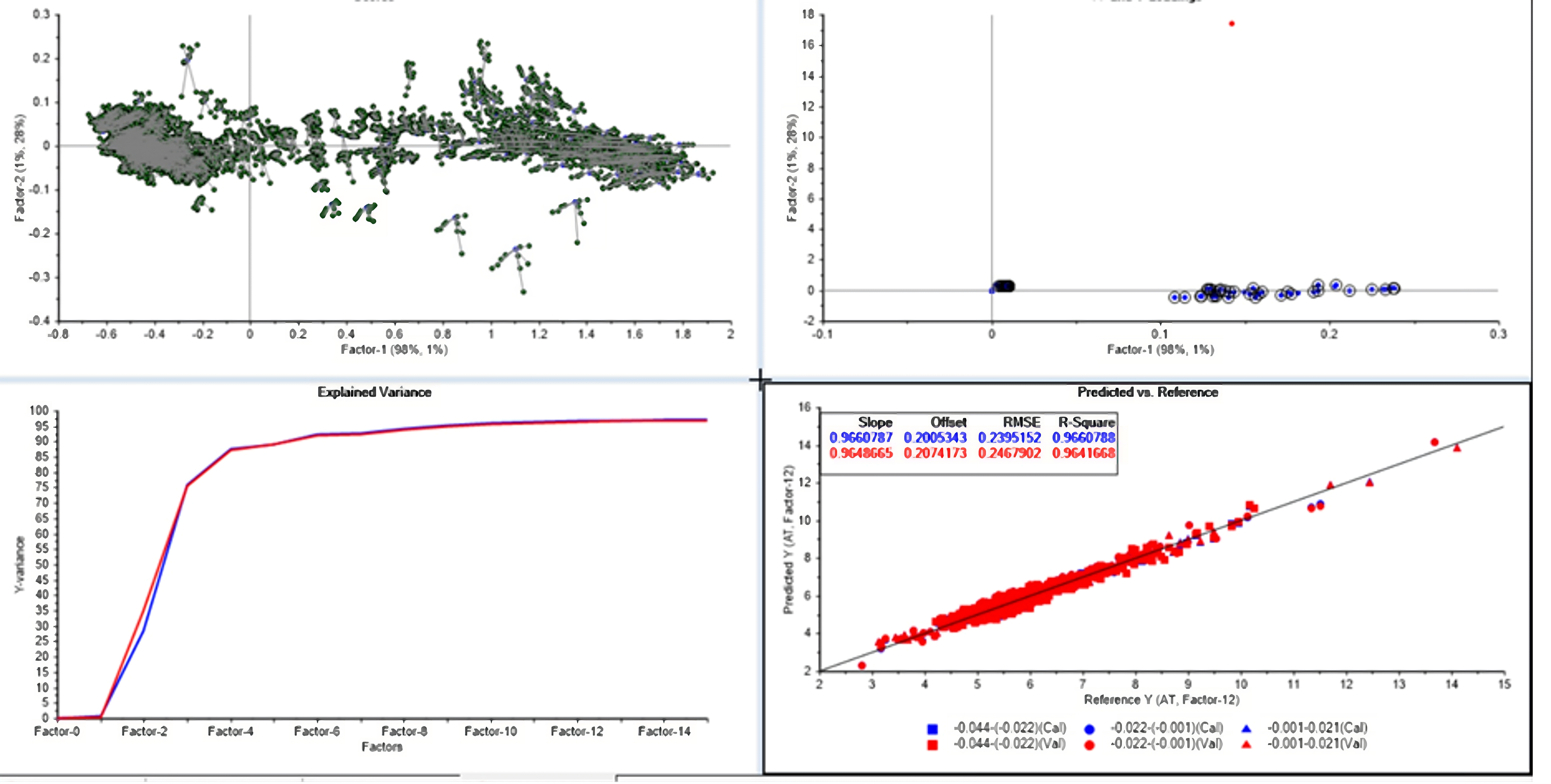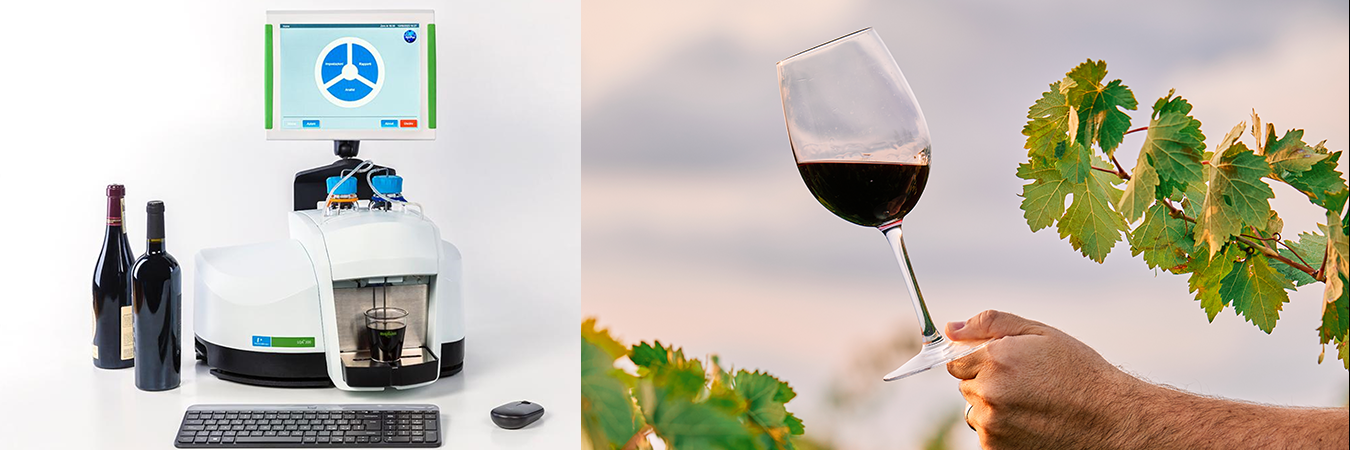Quantitative techniques and comparative analyses
The analysis of musts and wines is a process that requires instruments that are rapid, accurate and accessible, even for non-experts. Oenological analysis often requires the comparison between quantitative and direct techniques and comparative analysis.
In oenological chemistry, as in analytical chemistry, data is obtained through direct analyses that use selective techniques based on the analytes being checked, while the qualitative analysis of spectral comparison (matching) uses quantitative data to develop a predictive mathematical model that is able to explain uncalibrated unknown samples.
Collaboration with PerkinElmer for complementary analytical techniques
Steroglass has always believed in the complementarity of quantitative and comparative techniques, aware of the fact that there are different needs during the different stages of the winemaking process. There are in fact moments in which rapid data is sufficient for being able to follow a process, whereas at other times the data must be as accurate and reliable as possible.
Thanks to the expertise it has acquired as a manufacturer in the management of direct analytical techniques such as titration and enzymatic analysis, Steroglass has developed increasingly reliable predictive models. (Knowledge of the error in reference methods allows us to create very robust Statistical Mathematical Models).
In collaboration with PerkinElmer, a world leading company in the production of FTIR, we have developed innovative solutions that allow us to follow the entire winemaking process, from harvest to aging and bottling.
Precise, accurate total acidity analysis
One example of the application of these innovative solutions is total acidity analysis. Using a SET of specific selected samples at variable concentrations and pre-sampled in an official manner, analyzed with a properly calibrated primary instrument (potentiometric titrator), Steroglass obtained an excellent correlation in the spectral bands, guaranteeing precise and reliable results in both calibration and prediction.
We developed specific databases for the different parameters and used pre-processing and spectral corrections such as mean-centered average, detrending, Savitzky Golay, SNV and OSC to optimize the spectral bands and minimize the effects of background and noise. These approaches ensure accurate results and reduce statistical uncertainties.

Total Acidity: In this specific case the R2 coefficient of the RMSE registers approximately 0.96 in both calibration and prediction, confirming an excellent correlation in the spectral bands. The Explained Variance graph shows the almost complete explanation of the unknown samples through cross validation.(PLS FACTOR 12)
The LQA 300 FT-IR Wine Analyzer
The LQA 300 FT-IR Wine Analyzer is a concrete example of an innovative solution.
This instrument combines performance, accuracy, ease of use and speed for analyzing finished wine, must and fermenting must samples in less than 45 seconds, all in one compact device. Analysis protocols developed entirely by Steroglass allow this analyzer to determine a wide range of parameters such as: Alcohol (Potential and Overall); Relative Density 20/20; Total Dry Extract; Glucose Fructose; Tartaric Acid; Gluconic Acid; Total Acidity; YAN; Volatile Acidity; Malic Acid; Lactic Acid; Potassium; CO2; Nutritional Factor (kJ).

Always at the service of oenology
With the solutions offered by Steroglass oenological analysis becomes simpler, more precise and more efficient. These technologies allow winemakers to monitor and optimize winemaking processes, guaranteeing the quality of the finished product.
We have operated in the wine sector for 30 years, and our company is well known and recognized as a manufacturer of laboratory instrumentation and is a partner of Assoenologi.
